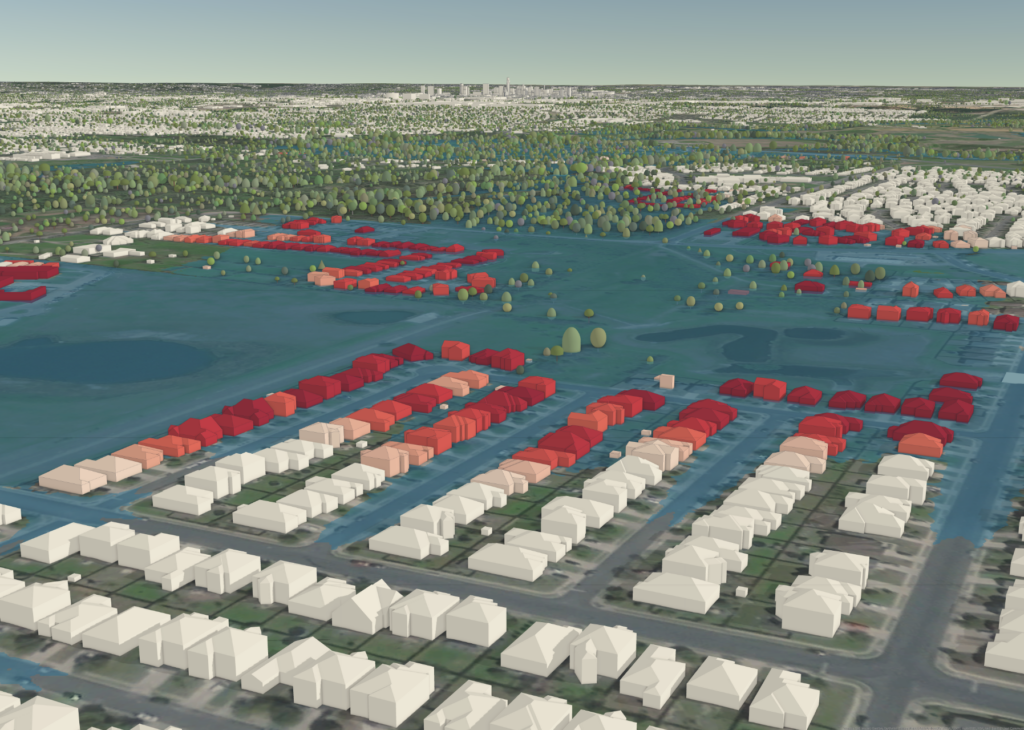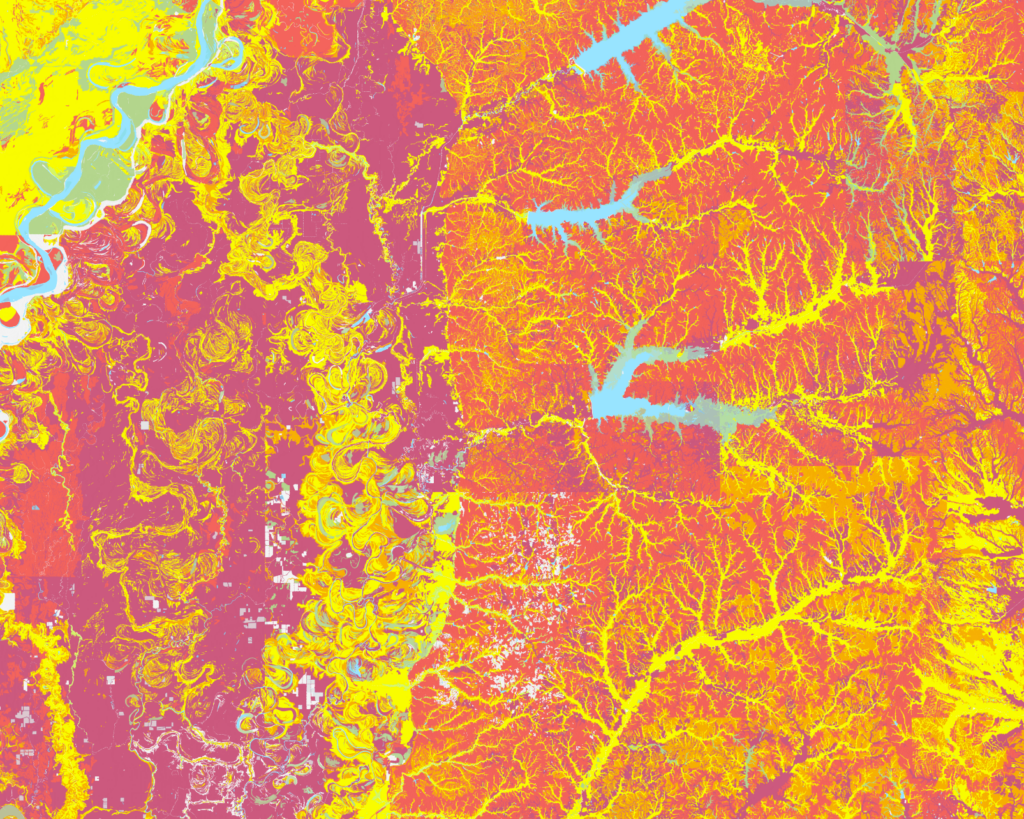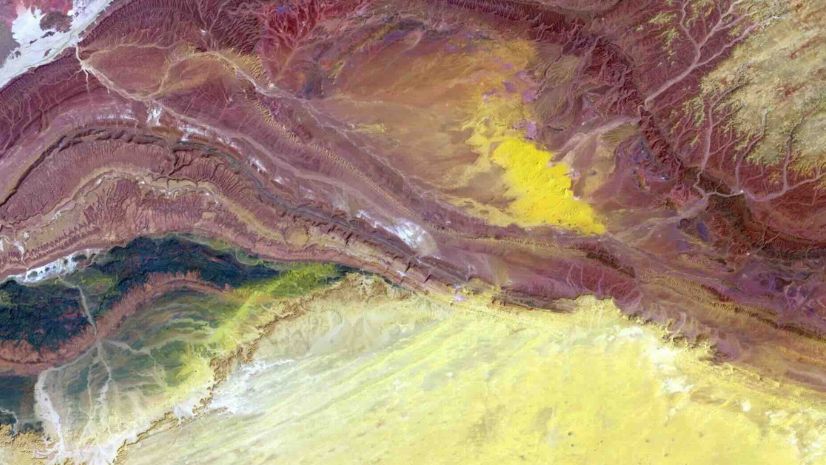Whether you want to simulate the depth of flood waters and water movement, model the impacts of a flood against infrastructure and the environment, or conduct a water resources analysis, ArcGIS has solutions and workflows to help.
With the latest release of ArcGIS Pro 3.3, customers have the ability to leverage location intelligence and flood data through three distinct workflows: Arc Hydro, Flood Impact Analysis, and Flood Simulation. These workflows can integrate and function together or operate completely independent of one another.
Since the use case for each workflow varies, you might find yourself asking: “Which one should I use, and when should I use it?”
First, it’s important to understand the problem you’re trying to solve. If you’re looking to create a nearly all-encompassing flood analysis and planning workflow, you should consider all three. But what if you’re only looking for one or two capabilities? Let’s dive a bit deeper into how and when you can use each workflow.

Flood Impact Analysis
Are you looking to determine—and quantify—the impact a flooding scenario may have on your community’s infrastructure?
Are you seeking to identify areas that are at risk of flooding in order to implement mitigation strategies?
The Flood Impact Analysis solution from ArcGIS Solutions helps develop localized flooding scenarios to visualize the impact on infrastructure and critical facilities. These capabilities can help with risk assessments and with identifying hazard mitigation strategies to minimize the potential for future flooding risk.
In addition to helping visualize the impact at various flood stages, the solution can identify and quantify the severity of the impact to infrastructure. For example, through flood depth visualization, you can determine whether the impacted structures would be partially or completely flooded and at which stage those levels would change. The solution can be applied to a neighborhood or expanded to a city or county analysis.
Learn More about Flood Impact Analysis
Flood Simulation
Are you seeking a “quick-look” at how flood waters—including rainwater and other water sources—may interact with the terrain of a neighborhood or business district?
Are you interested in visualizing how an implemented mitigation strategy—such as a berm, culvert, or dam—would impact the flow of flood waters in a localized area?
Designed for quick-turn tasks, the Flood Simulation solution allows users to visualize how mitigation strategies and protective measures such as sandbags may interact with floodwaters. Unlike engineering-based analysis and models, however, the Flood Simulation solution performs a quick analysis for fast action and illuminates geographic areas of concern for more in-depth analysis.
This solution is ideal for limited areas of interest, such as a business district or neighborhood.
Learn More about Flood Impact Analysis

Arc Hydro
Do you need to better understand the ingress and egress of water resources within a watershed, region, state, or large landmass area?
Are you looking to standardize water data structures so that data can be used consistently and for a wide range of water resource problems?
Do you need to estimate flood depth levels for a city, county, region, or watershed?
Arc Hydro can be used to conduct a water flow analysis and is intended to perform a more rigorous hydrology analysis of water ingress and egress routes. It offers a framework that helps you build a foundational dataset that can be used in water resource analyses and for integration with water resource models. Hydrologists, water resource experts, and watershed analysts are likely to find this product useful in support of scientific and engineering analyses.
Integrating Workflows
Interested in integrating the three workflows for a flood analysis?
Arc Hydro outputs include hydrologically-sound depth grids. These grids can be used to do an impact analysis to find areas of flooding concern using Flood Impact Analysis, which can inform the identification and placement of mitigation strategies. Flood Simulation can then be used to simulate flood changes based upon the mitigation strategies selected.
The flexibility of Flood Simulation having the ability to run multiple scenarios to test and see the effects of implementing various mitigation measures also means that users can discover what yields the least impact— which is invaluable knowledge when you need to act quickly in an emergency. After testing these different measures with Flood Simulation, you can then export the new flood depth rasters and rerun Flood Impact Analysis to compare changes.
Any questions? Connect with your Esri Account Manager or email emergencymanagement@esri.com to get a response from our Emergency Management team at Esri.
Need assistance during an active event? Please submit a request at Disaster Request Assistance.

